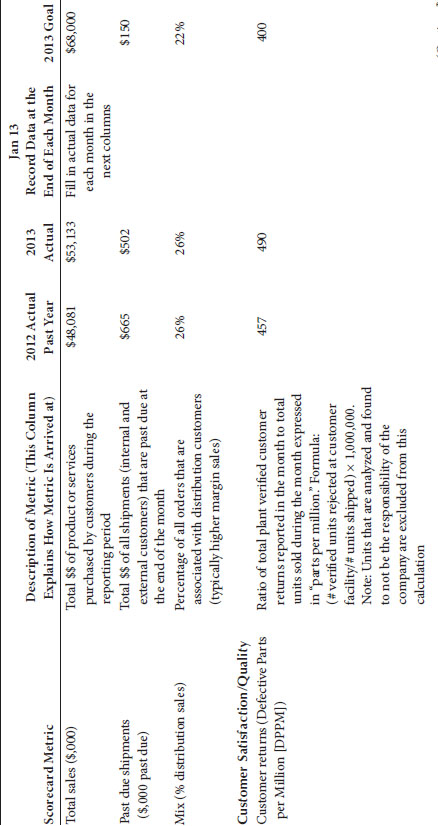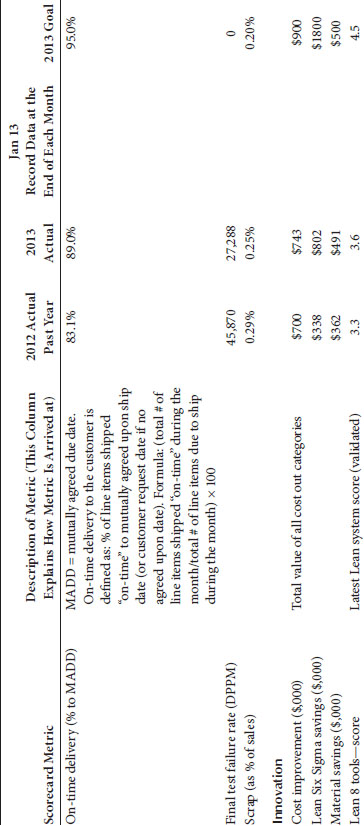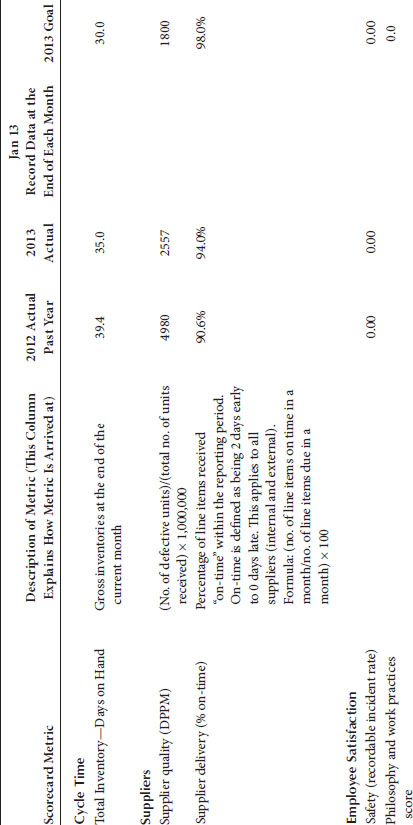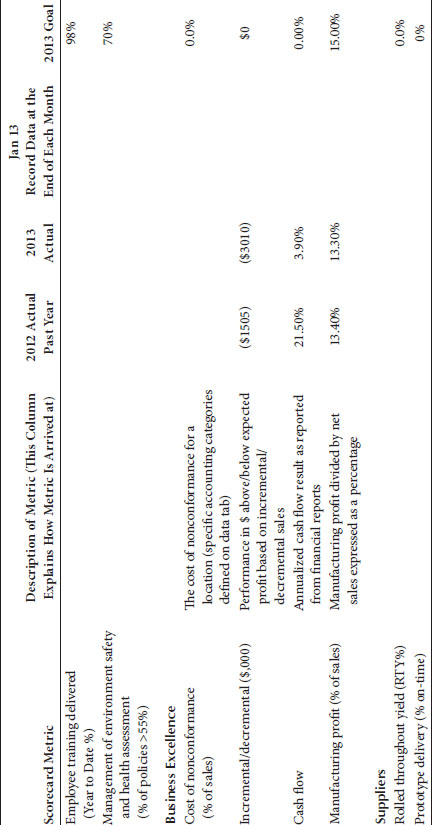
Measurement, Analysis, and Knowledge Management
The Measurement, Analysis, and Knowledge Management Category examines how your organization selects, gathers, analyzes, manages, and improves its data, information, and knowledge assets. Also examined is how your organization reviews its performance.
The main point within the criteria is that all key information should be gathered and analyzed to measure performance effectively and manage the organization. In simplest terms, this category is the “brain center” for the alignment of an organization’s operations with its strategic directions. However, since information and analysis might themselves be primary sources of competitive advantage and productivity growth, the category also includes such strategic considerations.
1. How does the organization select its data to support operational performance and strategic decision making and innovation?
a. The selection of the required data stems from the organization’s vision, mission, Key Business Drivers (KBDs), and strategic planning.
b. KBDs are defined first. They give rise to Key Performance Indicators (KPIs) and lead to Key Support Measures (KSMs).
c. Results tracking data are the foundation through which the daily, weekly, and monthly data are collected.
2. How does the organization gather its data?
a. As shown in Figure 7.1, the data are collected by the four councils: safety and culture, quality, speed, and cost and growth. They track the data (19 types of data shown) through the result tracker work instructions, forms, and digital devices like a personal digital assistant, also known as a handheld PC.
FIGURE 7.1
Balanced Scorecard measures.
3. How does the organization analyze and review its performance?
a. The data are first collected in the Balanced Scorecard (Table 7.1) where the data trend is determined.
b. Weekly Quality Operating System (QOS) meetings held by the councils review the data and using the Performance Analysis and Improvement Process (PAIP) (Figure 7.2)
i. Ensure the quality and availability of data and information to those who need it
ii. Review organizational performance and capabilities
iii. Manage organizational knowledge using corporate software standards
4. Information technology and corporate software standards
a. Production, projects, budgets, and schedule are easily maintained when procedures are working and if they are based on standards. Software standards have proven concepts and the standards requirements when implemented make the delivery process more efficient by reducing costs and increasing scope and quality. The standards promote quality and efficiency; they create more efficient and predictable software products, providing a tool for consistency, confidence, and faster communication.
5. Assessment of the business excellence system
a. Chapter 9 deals with the Business Excellence Assessment System.
This process starts at the highest level, with the senior leaders identifying a set of metrics that will be used for monitoring overall organizational performance. A balanced set of metrics is identified. An important part of this step is reviewing metrics selected from the previous year and identifying adjustments to better align the measurement process with organizational needs and direction.
Excellent organizations describe how they review organizational performance and capabilities. Their senior leaders participate in these reviews. They document policy and the process for performance analysis and improvement.
Balanced Scorecard—A Typical Example




FIGURE 7.2
PAIP guide.
PERFORMANCE ANALYSIS AND IMPROVEMENT PROCESS (PAIP)
This procedure describes the minimum requirements and controls for ensuring that organizations systematically implement the PAIP. This policy applies to all levels of the organization (corporate, groups, operations, divisions, and sites) and all areas of the business.
2.1 The top management team for the site will meet at least twice annually, to review and update the strategic plan initiatives, projects, and goals to ensure that the plan complies and aligns with the corporate strategic plan.
2.2 The approved strategic plan shall be communicated and available to all affected managers.
2.3 All levels of management (executive to shop floor) shall develop plans; determine the key processes and key measurements (preferably having leading data), with related performance standards and continuous improvement goals for their areas of responsibility; in line with the focus and objectives of the strategic plan.
2.4 Tracking methods shall be created to track the key measurements for the manager’s respective area of responsibility. Tracking via trend analysis and Pareto and Paynter charts is strongly recommended, including action plans as appropriate.
2.5 Periodic meetings (minimum quarterly) shall be conducted to review the measurements by the managers for corporate, group, operations, division, business unit, plant, department, and work cell. Performance of the measurements shall be tracked at the designated frequency. Action plans shall be generated for metrics that are not trending toward the desired goal. Structured problem-solving method, such as the 8 Disciplines (8D) process, will be used to determine the root cause and develop corrective actions for items that are underperforming. Employees at all levels will be involved, as applicable, to facilitate the improvement process. Minutes of the meeting shall be tracked.
2.6 Correlation between the metrics and the final stakeholder desired results shall periodically (minimum twice annually) be established and reviewed as part of the management review process. Metrics and goals will be adjusted as required to adapt to the changing business requirements.
PERFORMANCE ANALYSIS AND IMPROVEMENT PROCESS FLOW
As we can see, the PAIP covers total organizational excellence in Figure 7.3.
Keeping constant employee awareness for excellence in the center and based on stakeholder feedback, a strategic plan is prepared. Organizational key value creation, support, and administrative processes are identified. These processes are measured by the measures shown in Figure 7.1. These measures (KBDs, KPIs, KSMs, and tracker data) are improved by applying problem-solving tools and methods including action plans, 8D, suggestions, teamwork, and Enterprise Lean Six Sigma. The resulting trends are measured, the correlation is established between stakeholder expectations and actual results, and finally considering stakeholder feedback, the next strategic plan is prepared taking the organization to higher levels of excellence.
FIGURE 7.3
PAIP flow.
INFORMATION AND KNOWLEDGE MANAGEMENT
IT plays a major role in the measurement, analysis, and knowledge management.
Information technology has transformed the way businesses operate and interact with their key stakeholders: employees, suppliers, customers, and investors. From desktops and mobile devices to business servers and powerful search engines, IT helps businesses manage daily operations, control costs, and compete with large and established companies.
IT comprises of six main functions.
IT enables efficient and high-speed communications. E-mail, teleconferencing, video conferencing, and Internet calling allow employees to stay in touch with their colleagues around the world. IT also enables virtual collaboration. For example, U.S. employees can conduct product design meetings with their Chinese or Indian colleagues using video conferencing. Employees can log into their company servers from home, and traveling managers can respond to e-mails or download documents using mobile technologies. Companies can also set up internal social media sites that allow employees to exchange information and collaborate on projects.
Data management is a key IT function. Technological advances and increasingly complex businesses have increased text, voice, and video data traffic within and among organizations. Businesses use databases to store, manage, and access vast amounts of data, including customer information, inventory records, employee files, and financial documents. However, small and large businesses must guard against unauthorized accesses, which may compromise data integrity and raise privacy concerns.
IT is increasingly central to a company’s marketing operations. These may include creating advertising copy on powerful graphics computers, placing ads on social media sites, and processing online orders on an e-commerce site. Small business owners can use online search engines to research consumer buying trends and identify profitable marketing opportunities. Software systems also allow companies to track visits on websites, clicks on Internet ads, and the amount of time spent on each section of an e-commerce site.
Companies can leverage IT to improve processes and achieve cost savings. For example, a small business could insist on paperless communication inside the company to save on printing and duplication costs, while achieving reliable data transfer. Virtual collaboration saves on expensive travel costs and improves productivity because employees do not have to spend hours or days on planes and at airport terminals. IT can make human resource processes more efficient. For example, a small business can organize Internet-based training sessions for its customers and employees, thus saving cost and time.
5. Enterprise Resource Planning
Enterprise Resource Planning (ERP) is the use of software systems to link together business functions, including sales, manufacturing, human resources, and accounting. Management gets access to real-time aggregated information, which helps in operational and strategic decision making. For large companies, these systems can be expensive and the installation can disrupt operations for months. However, small businesses can install the software modules for one function at a time, thus minimizing costs and disruptions.
IT implements several processes to ensure that data and information availability mechanisms are kept current with changing business needs and directions.
Examples are as follows:
• IT strategic planning process
• IT employee satisfaction survey
• IT customer satisfaction survey
• IT supplier performance evaluation resource
• IT help desk request process
It is an approach to ERP that makes use of cloud computing platforms and services to provide a business with more flexible business process transformation.
ERP is an industry term for the broad set of activities that helps a business manage the important parts of its business such as purchasing and inventory management. ERP applications can also include modules for the finance and human capital management aspects of a business.
To some industry experts, the promise of cloud computing is that it will provide an opportunity for business to completely transform how it uses and pays for information technology. For example, cloud sourcing legacy ERP applications might eliminate the need for a business to purchase the necessary server and storage hardware and maintain it on site, which, in turn, has the potential to reduce operational expenditures. Other industry experts, however, point out that the problems associated with ERP software deployments—such as integration problems between ERP modules and a company’s legacy systems—would simply transfer to the cloud.
The hope is that ERP software developed specifically for cloud computing environments will include new feature sets that were simply not possible using old technology. Until then, cloud ERP is seen as being good for start-up organizations and new business divisions within an existing company.